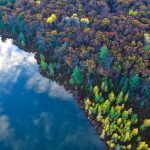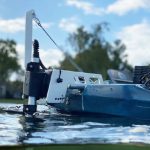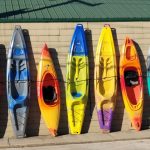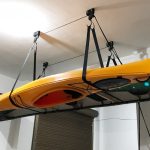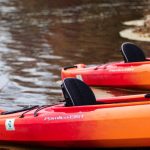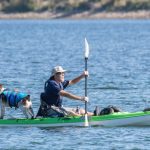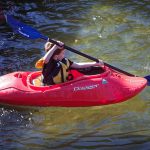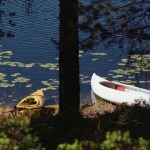Michigan is home to some of the greatest kayaking spots in the entire US. We’ve compiled a list of the best places for kayaking in the Great Lakes State.
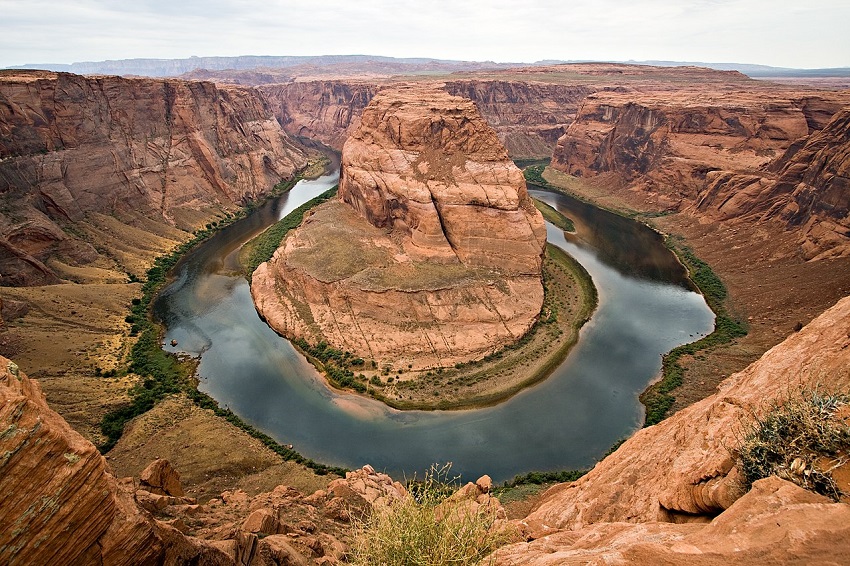
Because it’s so darn hot 99% of the time, you can enjoy a lovely paddle pretty much any time of the year. Plus, it’s home to some gorgeous lakes, rivers, and, of course, the spectacular Grand Canyon itself.
If you’re looking for a game-changing destination for your next kayaking trip, Arizona is definitely a top contender.
Below, we’ve gathered a list of the best places to go kayaking in Arizona, information on kayaking tours in Arizona, tips for safe kayaking in Arizona, a look at the laws that govern Arizona waterways, and a few FAQs that people ask about kayaking in the Grand Canyon State.
By the end of this post, you’ll be ready for a truly spectacular paddling experience!
15 Best Places to Go Kayaking in Arizona
1. Lone Rock Canyon
Lone Rock Canyon makes for an excellent destination for beginners just getting their paddles wet for the first time. The water is calm and clear, surrounded by stunning sheer cliffs that make for a breathtaking day spent out testing your kayaking skills.
For those who want some true adventure, know that Lone Rock Canyon is home to cliff-diving experiences. You can join a tour or solo paddle out to hidden spots where you can leap off the cliffs and into the water below. Now that’s adventure done right!
2. Watson Lake
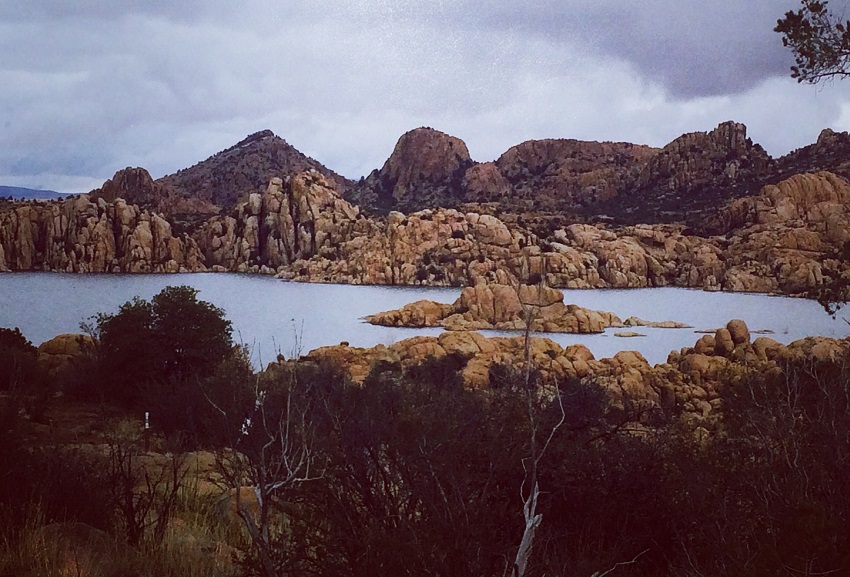
Looking for a bit more challenge but still want to keep it easy and relaxing? Watson Lake is the spot for you! The lake is surrounded by the Granite Dells, ripple-shaped boulders dating back more than 1.4 million years rising from the edges of the lake. You can test your steering and handling skills getting right up close to the Dells, or even get out of your kayak to go rock-hopping and climbing.
The water is calm enough that you can kayak and paddleboard with ease. Don’t have your own gear? No worries. There are plenty of places on and near the lake where you can rent SUPs and kayaks or even join a tour of the lake.
A word of caution: due to high mercury levels in the water, swimming in the Watson Lake is prohibited.
3. Blue Ridge Reservoir
This reservoir offers some of the most scenic and breathtaking views of any Arizona waterway. Elevated to 6,700 feet above sea level, it offers stunning panoramas and vistas of the nearby forest and the canyon walls of Mogollon Rim.
Plus, the waterway is mostly devoid of motorboat traffic (only boars with electric motors or small gas motors up to 10 HP are permitted), and you’ll have it largely to yourself all day long. It’s the perfect place to go for a lazy day of paddling or a few hours spent practicing your steering and handling skills.
The ambience is just so calm and soothing you can’t help but have a wonderful day in the great, sunshiny outdoors.
Be aware, however, that as a canyon lake, the Blue Ridge Reservoir does not have a lot of shoreline with sandy beaches. The sides of the canyon are mostly steep and don’t allow easy access to the water.
4. Lower Salt River
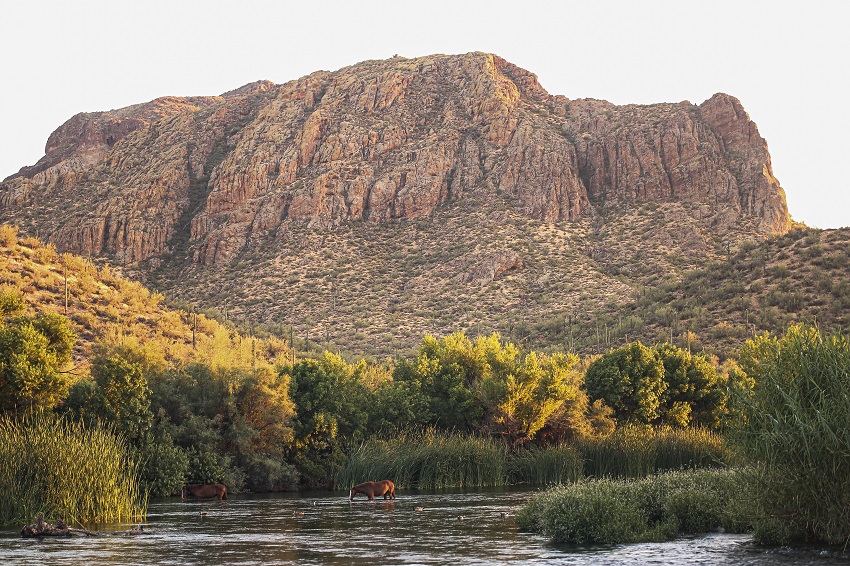
Located in Mesa, just near Phoenix’s eastern border, the Lower Salt River offers one of the greatest spots for a long day spent out on the water. At the northern end of the waterway near the launch point, you have a real chance of seeing deer and even wild horses. When you reach Bulldog Cliffs, you’re in for a riot of glorious color from the wildflowers growing there. And for those who want to challenge themselves, the beginning of the river features some rapids to test your skills.
However, you’ll find the water is easy, there are plenty of places to put in and take-out, and you’re close enough to Phoenix that you can make it a day trip or just paddle for a few hours, whatever suits your schedule best.
5. Lake Pleasant
This man-made lake—formed by the Carl Pleasant Dam nearly 100 years ago—is one of the most popular paddling destinations near Phoenix. Bordered by cliffs, it’s a great place to take in some gorgeous views while still enjoying a day under the sun and on the water. The waters are just right for canoes and kayaks, and you’ll find there are plenty of hidden beaches and spots along the 11.5-mile waterway that you can spend long hours exploring.
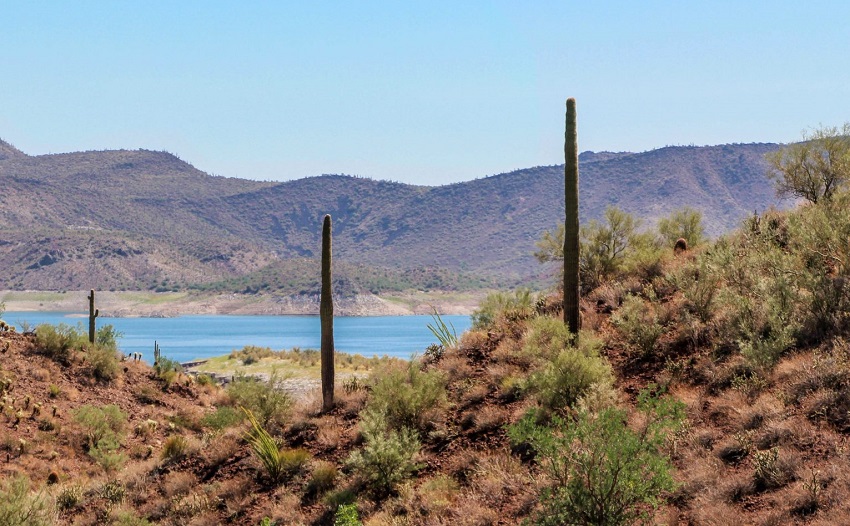
Fair warning: as one of the most popular paddling destinations, it can get a bit busy, even crowded at the wrong time of year. Be prepared to share the waters with lots of other kayakers and canoers.
6. The Colorado River
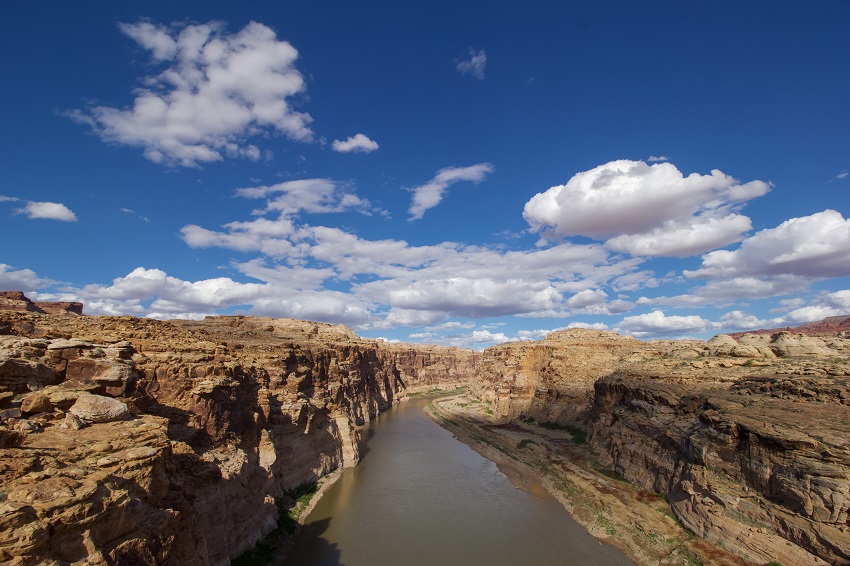
If you’re up for a true adventure and have the skills to back it up, the Colorado River is the spot for you! The river runs through the Grand Canyon itself, and travels for a whopping 227 miles—a journey that can take up to 3 weeks. It’s also home to Class 4 whitewater rapids that will put even the most skilled paddler to the test.
Be aware that each season has something different to offer on the Colorado River. Summer is the time of flash floods, blistering heat, and afternoon storms, while you’ll encounter gorgeous wildflowers but also lower flows during the spring. Keep these in mind when planning your trip down the Colorado River, and be prepared to pack a lot of supplies!
7. Emerald Cave
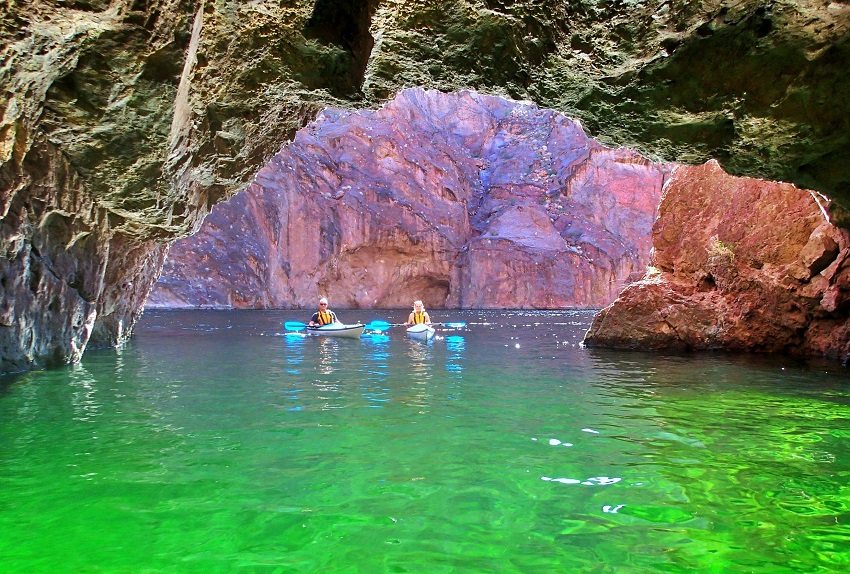
I guarantee you’ve never experienced anything quite like Emerald Cave. Located near the Colorado River’s Black Canyon Water Way, this cave is home to yellow and black rock that is illuminated by light from the river and the southwestern sun. The rivers are a pristine emerald that will take your breath away and enchant you for the entire 3-mile run.
But that’s just part of what this particular paddling destination has to offer. To reach Emerald Cave, you get to paddle through looming volcanic cliffs and narrow canyons that rise a whopping 900 feet above the river. You’ll also steer around volcanic boulders that will test your handling skills. There’s even wildlife to spot, including ospreys, eagles, bighorn sheep, and great blue herons. It’s a once-in-a-lifetime destination you absolutely won’t want to miss.
8. Upper Salt River
Planning a multi-day trip? The Upper Salt River is the perfect waterway to keep you busy for a few days at a time. Located northeast of Phoenix, the river runs through a national forest for hundreds of miles, passing through gorgeous, enormous rock formations and lush vegetation. Expect to see a lot of wildlife on the shore as you paddle downstream.

However, be aware that this destination is not for the faint of heart. There are more than a few sections of rapids to tackle, and there is a great deal of water to cover before you reach the lowest section of the river and the river basin. For a truly memorable end to the trip, keep paddling until you reach the gorgeous Lower Salt River (see above).
9. Knoll Lake
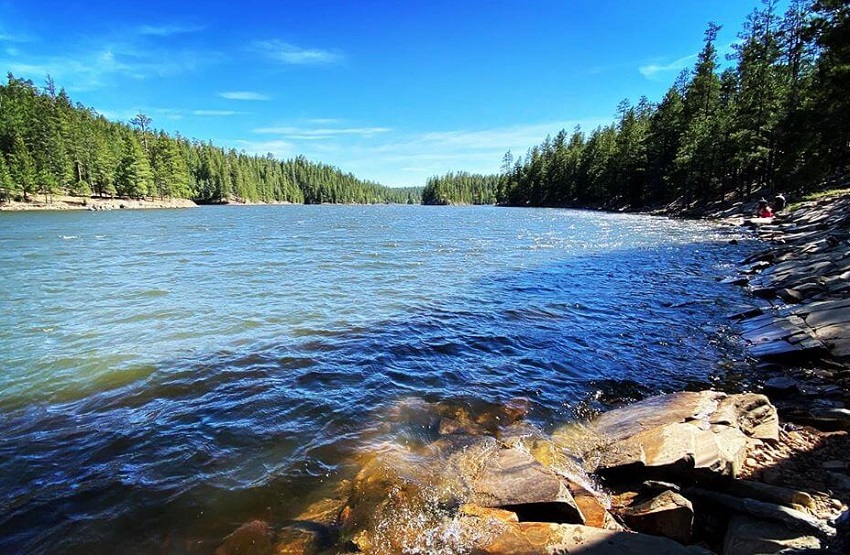
Located in the Coconino National Forest, Knoll Lake is a truly spectacular place to spend a multi-day kayaking camping trip. There are countless spots along the lake’s shore to make camp, but the water is calm and the lake feeds into multiple rivers and streams that you can spend the day exploring.
The lake is located just a short distance away from Flagstaff, making it an ideal day destination for anyone who can only squeeze in a few hours of kayaking. It’s beginner-friendly and one of the best locations to consider if you want somewhere to relax on the weekend where you know it won’t get too crowded.
10. Tempe Town Lake
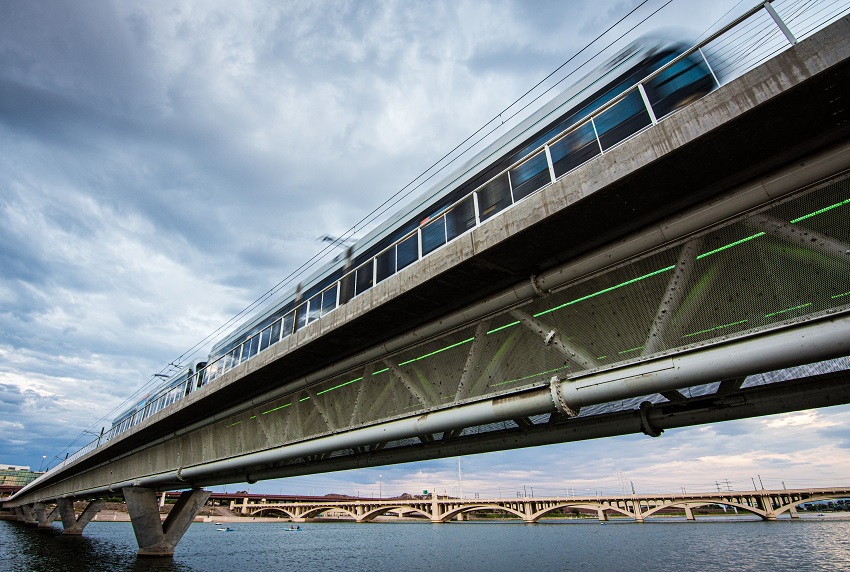
If you’d rather stay in the city and explore local waterways, then Tempe Town Lake is the perfect place for you. You’re close enough to Phoenix that you can zip to the lake and back again in a few hours, and there are numerous spots where you can rent kayaks or paddleboards to get out on the water even if you don’t have your own gear.
Be warned: the lake is a very popular destination, so it can get a bit crowded with kayakers, swimmers, paddleboarders, and canoers especially during the summer months. But it’s well worth making the trip anyway so you can enjoy seeing the view of the city from on the water.
11. Big Lake
Looking to escape the hustle and bustle of city life and get far away from everything? Big Lake is the ideal spot for you. Located in the White Mountains in Arizona’s far north, it’s a bit of a drive from any big city, but it’s a unique destination that will be perfect for a few days of camping, kayaking, and fishing.
That’s right: angling on the lake is absolutely spectacular, thanks to Big Lake’s healthy trout population. Gas engines aren’t permitted, but you can use your electric trolling motor to zip around the lake all day long. You can also take in the spectacular scenery all around you and enjoy a day of quiet relaxation catching fish.
12. Lake Powell
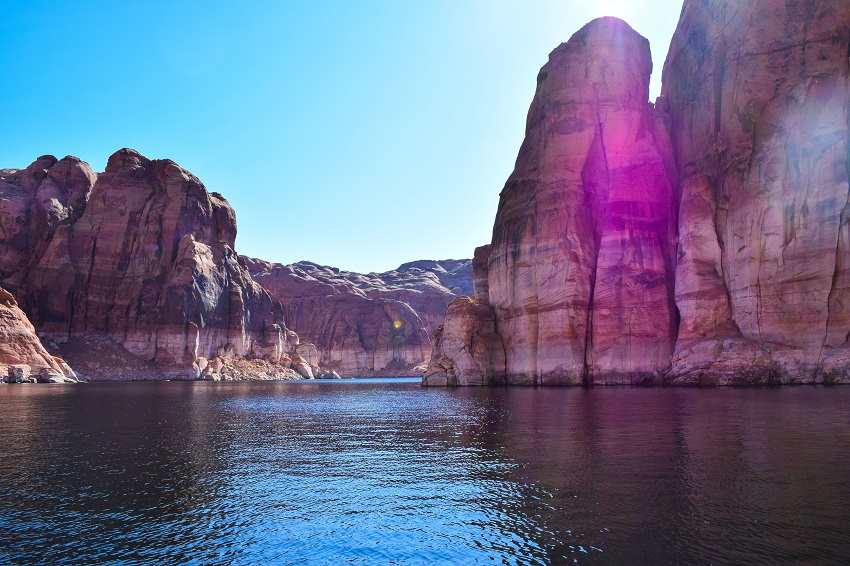
Lake Powell stretches an impressive 170 miles, meaning you’ve got endless days of kayaking ahead and you’ll still never get to explore it all! You can paddle through Lone Rock Canyon (see above), Antelope Canyon, or just stay on the main section of the lake itself for a relaxing, beginner-friendly paddle. With over 1,900 miles of shoreline to explore—including plenty of spots to camp—you’ll have no end of adventures for as long as you want to stay at the lake.
Lake Powell is also home to lots of kayak tours, so you can join a crew of fellow paddlers to explore some of the waterway’s best-guarded secrets.
13. Saguaro Lake
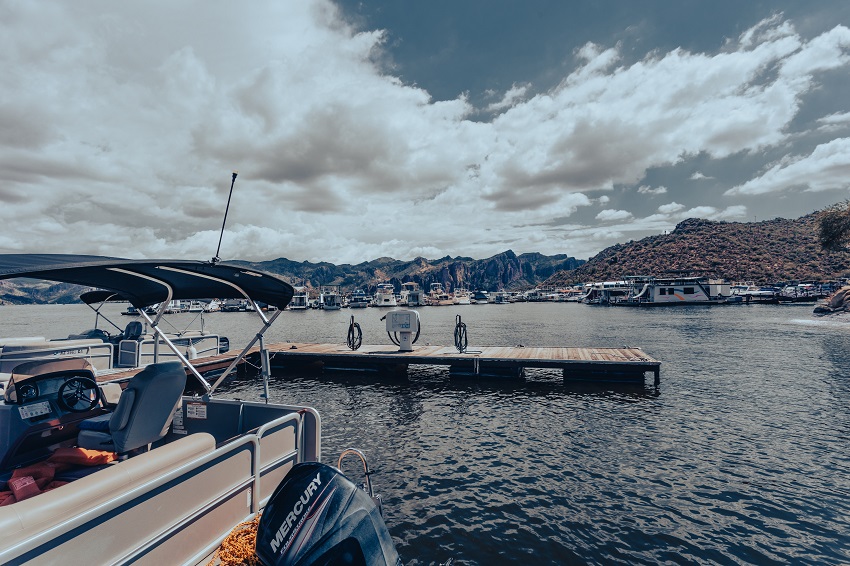
If you’ve only for a few hours to spare, Saguaro Lake makes for the ideal destination. It’s sized just right so you can explore the entire thing in around 2 hours, and it’s calm enough that even beginners will manage to enjoy themselves without struggling.
The lake is surrounded by some of nature’s most beautiful sights: towering cliffs, covert inlets, lush vegetation, even wildlife like snowbirds, bald eagles, and herons. Just be sure to get there and out on the water early (before 10 AM) before it gets crowded, especially on weekends. As one of the more popular (and easily accessible) paddling spots around, you’ll find yourself sharing the waters with a lot of tourists from around the country, even the world!
14. Patagonia Lake
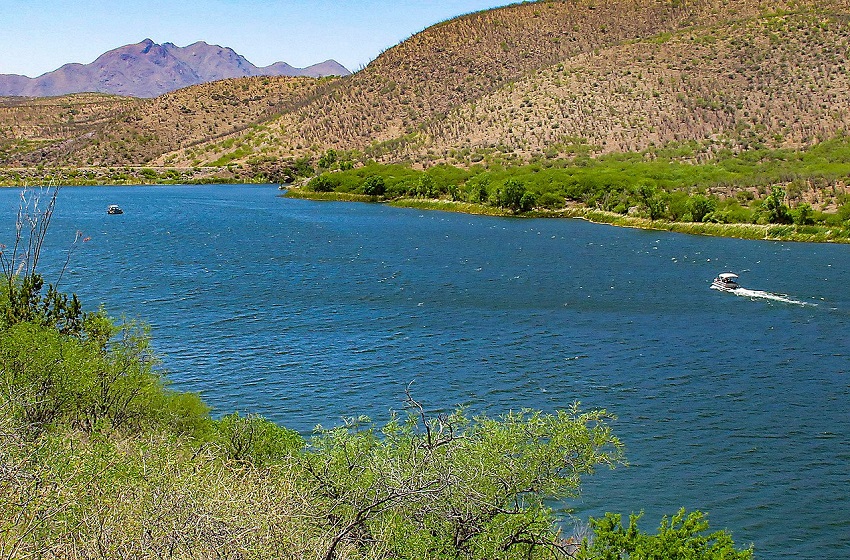
Patagonia Lake, located in Patagonia Lake State Park, is a gorgeous lake in the desert heart of Southern Arizona. It was formed when the Somita Creek was dammed, and has become one of the best, most beginner-friendly, most popular paddling destinations in the area. The water is calm, there are “no-wake” laws passed that keep motorized boats away from the eastern end of the lake, and you’ll find ample remote campsites where you can put ashore to relax and enjoy a night under the stars.
Keep an eye out for the many bird species that make their home on and around the lake, including hummingbirds of various species, the Inca dove, great blue herons, and the vermillion flycatcher. Birdwatchers will fall in love with this lake!
15. Lake Roosevelt
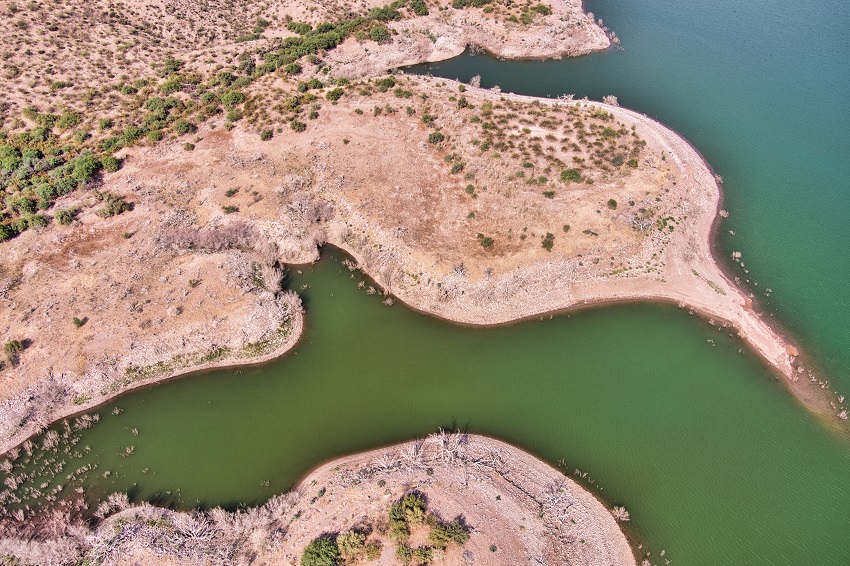
Located northeast of the city of Gilbert, Lake Roosevelt is just far enough away from civilization that you’ll all but certainly have it largely to yourself, but it’s still close enough that you can reach it early in the morning and head home at the end of the day. With hundreds of miles of shoreline to explore and ample campsites, however, it’s also a perfect overnight paddling destination.
The water is calm and flat, great for beginners but also offering a mirror reflection that makes it seem far more grand and breathtaking during the peak of the day. You can test your steering and handling skills zipping between the trees growing out of the water, bask in the sun, and enjoy every minute you spend out on this man-made lake.
Kayaking Tours in Arizona
As you’ve seen from our list above, there are a lot of truly spectacular places to go kayaking in Arizona. From man-made lakes to meandering rivers to challenging whitewater rapids to even the Grand Canyon itself—now that’s adventure!
One thing to keep in mind, though, is that there are dangers to many of these waterways. Some will be mentioned specifically (like the rapids of the Upper Salt River), while others will be lesser-known (for example, the ultra-narrow canyons of Lake Powell).
To stay safe, it’s often a good idea to explore a new, unfamiliar waterway for the first time in the company of an experienced tour guide. Not only do you have access to quality gear, but the expertise of someone who has lived in the region for years—or their entire lives—and spent most of that time out on the water.
An experienced guide can help you to avoid the hazards, but also show you the hidden secrets known only to locals. You’ll learn how to read the currents, navigate the more treacherous spots, and how to avoid potentially dangerous interactions with local wildlife.
Kayaking tours are safer, but in the end, also a great way to make the most out of every trip.
Here are a few of the kayaking tours in Arizona you may want to consider:
- Kayak Powell (tours of Lake Powell)
- 360 Adventure (tours of the Salt River)
- Sedona Adventure Tours (tours of the Verde River)
- Saguaro Lake Ranch (tours of Saguaro Lake and the Lower Salt River)
- OAC Tours (tours of the Verde River and Lake Pleasant)
- Hidden Canyon Kayak (tours of Antelope Canyon and Labyrinth Slot Canyon)
- Kayak the Colorado (tours of the Colorado River, including the famous Horseshoe Bend)
Or, if you want to find tours elsewhere, you’ve got options on how to search for them:
- Trip Advisor – You can narrow down your location of search by inputting the city/town where you’ll be visiting, and see a list of all the great places where you can book kayaking tours (or rent gear).
- Viator – This site, owned and operated by Trip Advisor, is another useful resource to help you find kayaking tours in Arizona. Again, you’re able to narrow down your options to a specific city, or you can search the entire state to find inspiration for your next trip.
- Get Your Guide – This website lets you directly book kayaking tours around Arizona—including Emerald Lake, Black Canyon, the Colorado River, and the Lower Salt River—and offers special discounts for those utilizing their website.
Tips for Safely Kayaking in Arizona
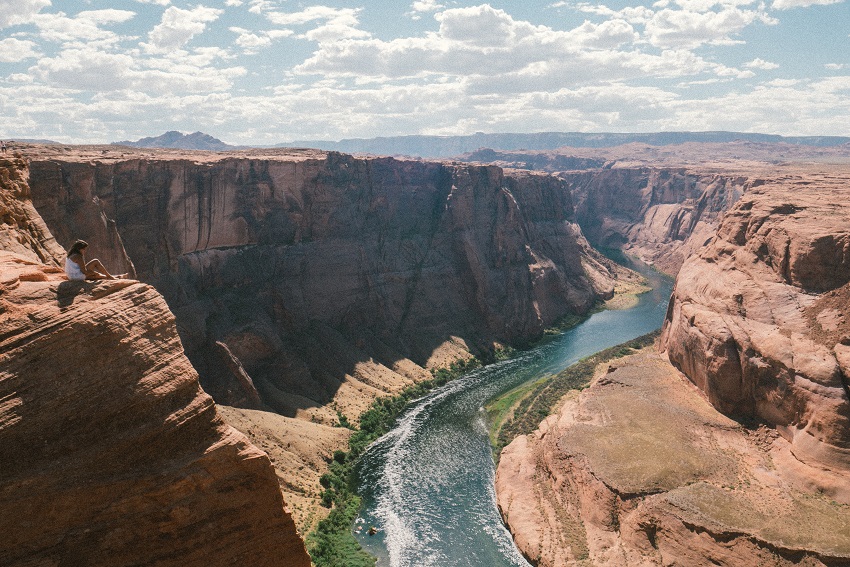
Kayaking in Arizona is an absolute delight, but it’s important to know that there are some dangers that could make it a less-than-safe activity. In order to ensure your trips are as safe and enjoyable as possible, here are some tips to follow:
Research First
Not all kayaking destinations in Arizona are beginner-friendly. Some are more suited to intermediate or even advanced paddlers. Nor are all suitable for paddleboards—due to strong currents, long distances, cold water, or unpredictable flash floods (such as in the Grand Canyon), it’s safer to stick with kayaking.
It’s always best to research potential destinations before venturing out onto unfamiliar waters! Use our interactive map of places to go paddling while planning your next kayaking adventure.
Wear Your PFD
According to the Arizona laws (as you’ll see below), you aren’t obligated to wear your lifejacket or PFD when kayaking. That being said, when paddling new rivers or lakes, it’s always a good idea to wear your PFD just to be safe.
That goes double for any kayaking trip taking during the “off-season” when the water may be extra cold. Cold shock could put you at serious risk for drowning even if you’re not paddling in a particularly fast-flowing river or lake.
Whirlpools Are a Real Danger
On many of the faster-flowing rivers—including the Salt River and Colorado River—there are spots where the water swirling around rocks beneath the surface create whirlpools. These are real hazards where you could get stuck or even knocked out of your boat and into the water.
If you’re tackling a stretch of rapids or faster-moving river with a stronger current for the first time, it’s a good idea to consider paddling with a tour guide or instructor who can inform you on the hazards to be aware of.
Watch Out for Boats
Motorized boats aren’t allowed on all the Arizona waterways, but there are plenty of lakes and rivers where boats are permitted. If you’re sharing the water with boats, you could be at greater risk because they may not see you as easily, or the wake may cause you to tip over. Always be aware of boats and do your best to steer clear.
When on a river, try to stick closer to the shore. Boats tend to navigate down the river’s center, so you should be safer nearer the shore. When out on a lake, stay away from any sections where there are docks or put-in spots for larger boats.
Know Your Seasons
Summer is obviously the best time to paddle because the days are longer and temperatures are warmer, but you are at risk of heat stroke, sunburn, and dehydration.
Spring and fall typically involve better ambient daytime temperatures, but there is the risk of flash floods, storms, and rapid temperature drops that can make nights chilly—sometimes to a dangerous degree.
During the winter, you’ll need to wear warmer gear, preferably water-resistant or waterproof and thick enough to keep out the cold. You may want to avoid overnight camping due to temperature extremes.
RELATED: What to Wear While Kayaking: The Ultimate Dress Code for Paddlers
Pack Smart for Heat
Seeing as most of your kayaking is likely to be done during the summer, you need to be prepared for the heat. That means bringing:
- Sunscreen with good UV protection to prevent sunburn
- Ample water, at least 1-2 liters per person FOR EVERY HOUR you’ll be out on the water
- Hats, sunglasses, and long-sleeved clothing
Heat stroke, dehydration, and sunburn are all serious threats you’ll face when paddling in Arizona during the summer.
Check the Weather and Water Conditions in Advance
Always check the weather forecast before heading out on any paddling trip. Make sure the water level is high enough, the temperatures are warm enough, and you’re not at risk of flash floods or lightning storms. Be prepared to cancel, postpone, or re-schedule your kayaking trip if there is potentially dangerous inclement weather ahead.
And just because you checked the weather in advance, don’t simply assume the day will remain bright and sunny just because the forecast said so. Keep an eye on the sky and watch for any looming storms or thunder clouds. NEVER go in the water when there is lightning!
Kayak Within Your Abilities
There are plenty of beginner-friendly destinations for those new to kayaking, just as there are many paddling spots suited to intermediate and expert-level kayakers. While it’s always good to push your skills and challenge yourself, don’t do so to such an extent that you wind up in danger. Make sure to always choose paddling spots that are within your capabilities, where you know you can remain in control of your kayak.
Check Your Gear
Never go kayaking with unfamiliar gear without first checking it thoroughly. Check every bung and scupper plug to make sure water won’t get in, and make sure the compartments truly are watertight. Give the paddles a test, too—the last thing you want is for your paddle to fall apart on you or break while tackling rapids or paddling a dangerous stretch of river or lake.
It’s always best to bring your own gear whenever possible. That way, you know exactly what you’re using and you’re familiar with the feel of it. However, if you can’t bring your gear, make sure to give the rented equipment a thorough once-over before taking it out on the water.
Know How to React in Case of Capsize
Be aware that capsizing is a very real possibility, even for experienced kayakers. You need to be prepared and know how to react in case you tip over or capsize.
That means:
- Don’t panic or let the cold water shock cause you to freeze up. Remain in control of yourself and aware of your surroundings.
- Trust your PFD to keep you afloat.
- Grab your kayak or paddleboard if possible, and use it as another flotation device to help you swim back to shore.
- Practice capsizing, bailing, and self-rescue (including bailing out a water-logged kayak) so you can be prepared.
- When on a river, aim your body downstream and keep your head above the water so you can see where you’re going. Use your legs as shock-absorbers to help you steer clear of any dangers.
Most important of all, never paddle alone. Always make sure to have at least one other paddler with you at all times. That way, you’ll have help nearby in case of an emergency—or, in a really bad situation, someone who knows where you are and can go for help.
Never Overload Your Kayak
Your kayak has a specified weight capacity for a reason: it’s how much the kayak can reasonably carry without being weighed down and at risk of capsizing or filling with water.
When packing your gear for your kayaking trip, weigh your gear (and yourself) carefully so you can be sure you’re sticking within the recommended weight capacity.
Arizona Kayaking Laws
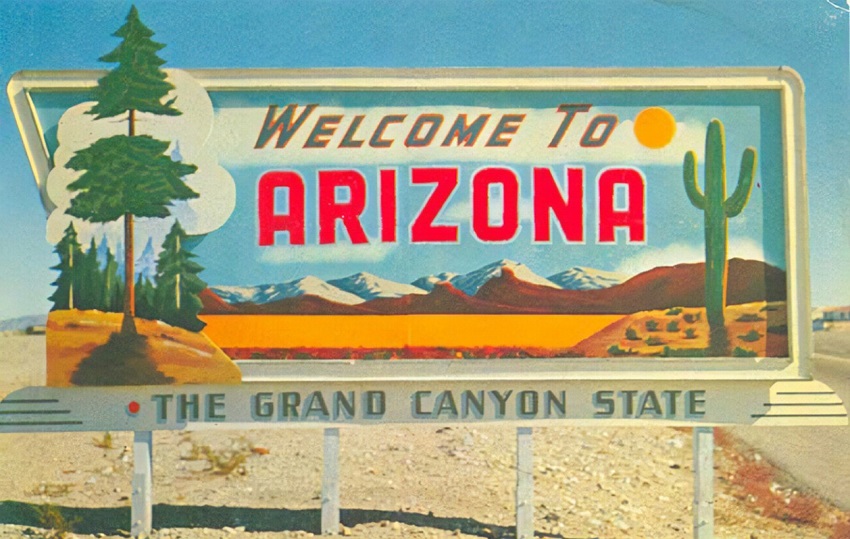
Kayaks are non-motor powered vessels
That means that in the state of Arizona, you don’t need to register it with the local DMV or obtain a permit to use it on local rivers, lakes, or other bodies of water.
However, if you’re going to use a trolling motor—either gas or electric-powered—you will need to register it, and you’ll need to obtain an Arizona Certificate of Number and registration decal to display on the vessel.
Consider removing the trolling motor and leaving it at home if you don’t intend to use it in Arizona. That way, you won’t have to worry about registration or permits.
There is no minimum age for operating a kayak
The only law applies to vessels with a motor over 8 HP, which must be operated by someone over the age of 12.
Kayaks, however, are perfectly safe and legal for even young children to operate.
Kayakers must have one lifejacket on board per person
The lifejacket must be U.S. Coast Guard-approved, and can be anything from Type I to Type V.
Children under the age of 12 must actually wear the PFD when on board the kayak, but anyone 13 and older can simply keep it on board within easy reach in case of emergency.
Kayakers must carry lights at “low visibility times”
Manually propelled vessels (like kayaks, canoes, and paddleboards) have to carry at least one light source, either a flashlight or lantern that generates a white light. It also needs to be within easy reach so it can be “exhibited in sufficient time to avert collision”.
You can opt for the red-and-green running lights that most larger boats feature, but it’s not a requirement.
Kayakers must carry a sound-producing device
Any vessel less than 39.4 feet in length (which definitely includes kayaks!) are required to carry some form of sound-producing device, typically a whistle or horn, that can be sounded in case of emergency, paddling after dark, or in foggy conditions.
Kayaks must carry visual distress signals (VDS)
Visual distress signals includes flares and flare guns, which can be seen from shore and alert emergency personnel that you are in need of assistance or in danger. You have to have at least one VDS on board your kayak,.
Kayakers absolutely can get an OUI
“Operating Under the Influence” is the kayaker’s equivalent of a DUI. You are required to avoid alcohol, drugs, or any other sort of influence even though your kayak isn’t motorized.
You can get a OUI if your breath or blood alcohol level is above 0.08% (typically after 1-2 drinks, depending on your size).
According to Arizona law, if you are operating a boat or personal watercraft of any sort on an Arizona waterway, you automatically give consent to any local law enforcement officer to test your blood, urine, breath, or other bodily substance to determine if you are under the influence. Many Arizona waterways have OUI checkpoints or law enforcement agencies in boats to test boaters.
The penalties for an OUI are:
- Mandatory 10 days in jail and up to $1,250 fine if your Blood Alcohol Level (BAL) is 0.08 to 0.15%
- Mandatory 30 days in jail and up to $2,500 fine if your Blood Alcohol Level (BAL) is 0.15 to 0.20%
- Mandatory 45 days in jail and up to $2,750 fine if your Blood Alcohol Level (BAL) is above 0.20%
- In addition, you can also be fined up to $1,250 in civil penalties if you refuse to be tested. If convicted of an OUI, you can be fined an additional $500 as well as additional court costs.
Kayaking in Arizona FAQs
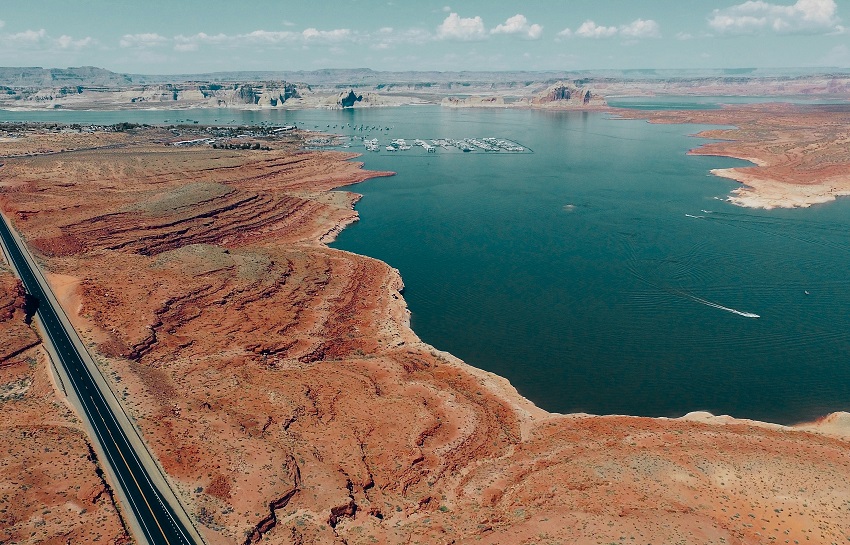
No. As you saw above, kayaks are non-motorized vessels (unless it’s a motorized kayak), and in Arizona, no permit is needed to operate a manually-powered vessel.
That being said, you may need to obtain permits to kayak on certain rivers and lakes in Arizona—for example, on the Colorado River or the Salt River.
Within the Phoenix metropolitan area, you have both the Gila and Agua Fria Rivers, as well as the Salt River. While most kayakers prefer to head out of the city for their kayaking trips—for example, to Lake Roosevelt—there are still options for kayaking inside the city of Phoenix itself.
You absolutely can! As one of the hottest states in the United States, you get many months when both the air and water are warm enough for paddling. There will be a few months during the winter when temperatures will drop, but never to such an extreme that it will be truly dangerous for anyone wearing the right gear (including a wetsuit or dry suit) to paddle.
There will be certain times of year when water levels are too low for you to safely kayak, or when the wind is fierce and increases the risk of capsizing. It’s worth doing your research once you find a specific kayaking spot in Arizona you want to visit. Make sure to investigate weather conditions during the time of year you want to go, just so you can be certain it’s safe for your paddling trip.

